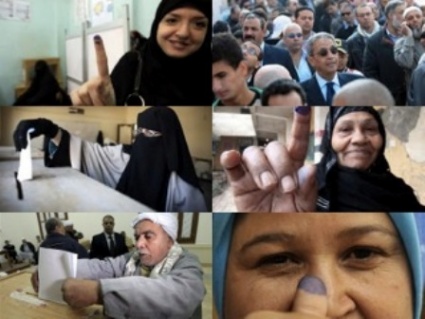May 22, 2012
Egypt: How would you rate the presidential candidates? Part 3/4

In the area of social justice including reducing poverty (currently at 40%) and unemployment (currently some 4 million are unemployed and a new one million is seeking employment every year) my proposed plan for Egypt's next president based on studying the experiences of 6 developing countries (China, India, Malaysia, Turkey, Brazil and South Africa) is to rely firstly on encouraging the co-op sector by offering loans with very low interest, massive training to do feasibility studies, sales and marketing, and training the trainers.
The responsibility of implementing the plan for social justice is also handed over to the same board of directors of “the regional bodies” responsible for achieving regional economical development.
The plan also calls for:
(1) the delivery of direct in-kind and financial support to the poor,
(2) turning slums into commercial areas to generate income to relocate its residents, to fund social programs and to spend on education and training, health care and infrastructure to benefit the people of these areas,
(3) providing one healthy meal per day for primary school children in poor areas,
(4) working to provide health care for poor families in clinics not more than 5 km far from their residential areas,
(5) providing health education regarding hygiene, pregnancy, birth control and child delivery, etc.
(6) massive campaign to quit smoking and staying away from junk food etc.
Achieving Social justice is a very important prerequisite to achieve freedom. The January 25th revolution calls for freedom for the 99% including the freedom to choose who will represent them in elections.
In reality there is no freedom of choice for the poor, the sick, the uneducated, the unemployed and/or those who are worried about the future of their children. They would be easily become victims of manipulation; political, social, or religious.
We emphasize here that social justice is in fact an investment in human capacity via economical development. As without it economical development is slowed down due to sit-ins, strikes, crimes and sectarian strife. Moreover, programs to achieve social justice will bring a large sector of the population, the poor and the unemployed to the folds of productivity.
THE SIX COUNTRIES
My proposed plan calls for reducing poverty, unemployment, consumption and birth rate by 7% every year and for increasing national saving, national and direct foreign investment, GNP and government spending on education, health care, infrastructure and R&D by 7% every year.
The plan is achievable, based on the past experience of the six developing countries that were successful in achieving high levels of both economical development and social justice.
For example, in Malaysia, the government succeeded in reducing the poverty rate from 70% to 5% in 20 years, and also succeeded in bringing the unemployment rate to 0% and now Malaysia has 2 million foreign workers.
The goal of Malaysia’s plan, launched by Dr. Mahathir Mohamad when he was prime minister in 1991 and dubbed "Vision 2020", was to bring Malaysia to the ranks of advanced countries in 30 years. He actually made the plan a resounding success.
Lessons learned from the experience of Malaysia are:
(1) the importance of the public sector in economical development. In 2004, the proportion of public sector companies (or private companies that partly owned by the government) in all listed companies reached 34%. Some of these companies, in the area of communications, aviation, power generation and distribution, government ownership reaches 50%,
(2) the critical importance of full cooperation between the government and the private sector including the exchange of information to improve performance in each of them,
(3) the importance of social and cultural dimension for the success of the plan,
(4) the importance of dialogue and transparency between all stakeholders (government, local administration and the private sector, etc.) in achieving the goals of the plan, and
(5) the importance of periodic review of the results in light of the goals. For example at the beginning in the 1990's the trend was "Look East" was prevailing. It meant cooperation with Japan and Korea, but the government changed this direction and initiated cooperation economically with the West.
On the other hand, Turkey doubled its national income 3 times in only 8 years - from 231 billion dollars in 2002 to 730 in 2010 and its gross national income has become the sixth in Europe and the sixteen in the world. It increased the per capita income in the same period from 3492 dollars to 10067, and exports has increased about 4 times in less than 10 years (from $ 36 billion in 2002 to 134 in 2011) and the government is working to increase exports to 500 billion in 2023 i.e. 3.7 times in 12 years.
Moreover capital and foreign direct investment has increased more than 22 times in 5 years (from an average of $ 1.1 billion a year in 1993-2000 to 22 in 2007).
Turkey used regional development bodies to maximize the per capita income in remote areas; the average per capita income in Istanbul was more than four times the average per capita income in remote areas in 2008.
Prof Elmasry of the University of Waterloo can be reached at elmasry@thecanadiancharger.ca His proposed program is posted at AsrEgypt.com








